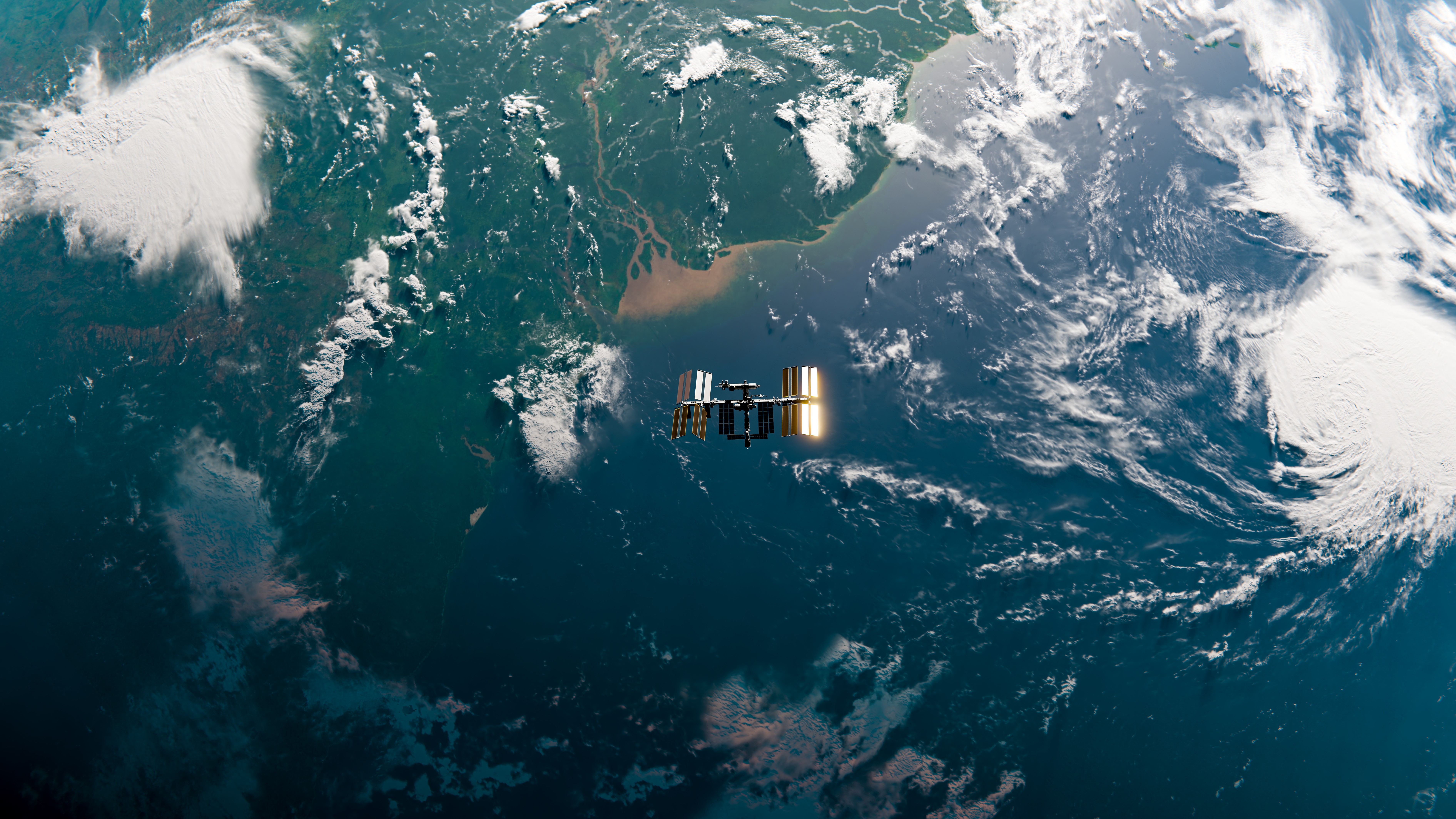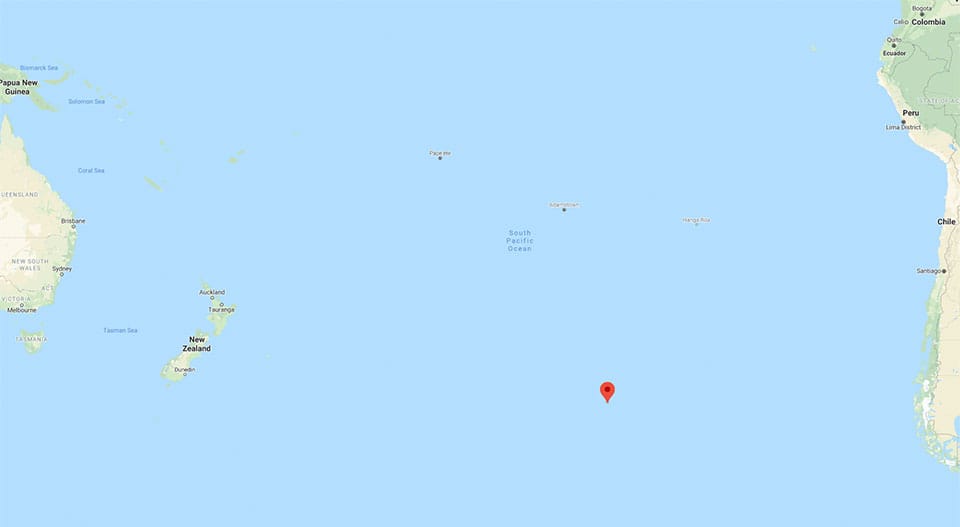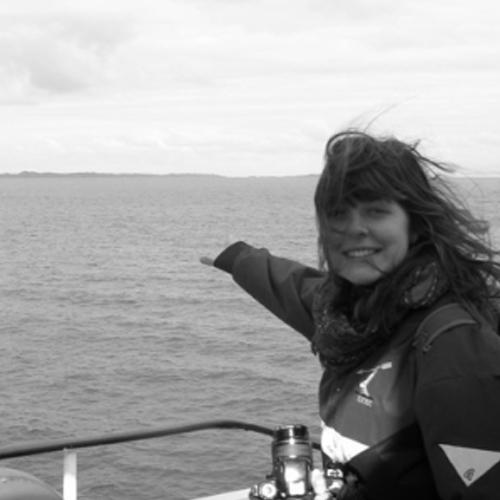What is Point Nemo, the remote, watery satellite graveyard where the ISS will go to die?
In the furthest, deepest reaches of the ocean, there is a watery graveyard where the world's satellites and space stations go to rest.

It's been called the "loneliest place on earth" — a location so remote it would take days to traverse the 1,670 miles (2,700 kilometers) of ocean between this point and the nearest patch of land — which, even then, is just a cluster of tiny islands inhabited only by birds.
Sitting in the middle of the Pacific Ocean, this is Point Nemo, also known as the "pole of inaccessibility." South of Easter Island, and north of Antarctica, ocean surrounds this point as far as the eye can see, and plunges to depths of over 13,000 feet (4,000 meters).
This extremity has made Point Nemo an attractive target for some unlikely prospectors: the space industry.
Satellite graveyard
Since the 1970s, global space programs have plunged almost 300 retired craft, including space stations and satellites, into the ocean at Point Nemo.
NASA recently announced it will do the same with the International Space Station (ISS), which has been in orbit for 25 years, and which will be officially retired by 2031. At 357 feet (109 meters) long and 925,335 pounds (419,725 kilograms), it will be the largest addition to the space graveyard at Point Nemo.
Sinking spacecraft into the ocean might seem like an extreme step. But the alternative — to leave it permanently circulating in space — "is not a solution," Stijn Lemmens, a space debris analyst with the European Space Agency, told Live Science.
There are now 40,000 known human-made objects orbiting our planet, ranging in size from 2 inches (5 centimeters) to giant craft like the ISS. The denser this soup of space debris becomes, the greater the risk that individual pieces will collide. This would cause them to accelerate, potentially triggering a cascade of collisions that would shatter space debris into smaller and smaller fragments — "to the point that you have cluttered your orbital environment, and it's no longer safe to put an operational spacecraft in there," Lemmens told Live Science.
Sign up for the Live Science daily newsletter now
Get the world’s most fascinating discoveries delivered straight to your inbox.
Related: Sci-fi inspired tractor beams are real, and could solve a major space junk problem
So, the ocean's remotest depths have become the next best option. To minimize the risk of death and destruction as spacecraft crash land, experts "look around the world for where nobody is living, where nobody is flying and where you have no boats," Lemmens said. "Point Nemo is one of them."

Many don't actually end up in the ocean, as they simply burn up under intense pressure and speed when they re-enter Earth's atmosphere. Likewise, when it is eventually decommissioned, some parts of the ISS will burn and disintegrate as it tumbles through the atmosphere.
But that won't be enough to dispatch its huge, hulking form. What's required is a carefully choreographed descent to bring it down to Point Nemo on its final orbit, to ensure that the remaining fuel gets used up before it sinks.
There are two other sites where the world's spacecraft meet a watery grave: one in the Indian Ocean and another in the South Atlantic Ocean. But Point Nemo's uninterrupted stretch of ocean provides the "widest possible area to [land spacecraft] safely," which is why it is the preferred site for the ISS, Lemmens explained.
An ocean dead zone
Nevertheless, is it really a good idea to sink hunks of metal anywhere in the deep sea? What about the Pacific's fragile marine life?
According to research, this is another reason why Point Nemo is an ideal satellite graveyard. Weak ocean currents in the region and the remoteness from land limit the flow of nutrients to this part of the ocean.
This, paired with extremely intense UV rays, make it a challenging place for life to survive and thrive.
Studies have found strikingly low biomass in the region, and it is believed to contain very little biodiversity.
When researchers sampled the surface concentrations of microbes around Point Nemo in 2019, they found "probably the lowest cell numbers ever measured in oceanic surface waters," study author Bernhard Fuchs, from the Max Planck Institute for Marine Microbiology, said in a statement at the time.
That doesn't mean plummeting space debris into the sea is a perfect solution, Lemmens added. Recently, researchers identified particles of aluminum in the atmosphere, which they determined couldn't have come from meteorites or Earth. Instead, they are likely from disintegrating spacecraft as they re-enter the atmosphere — which means they're potentially causing pollution before they reach Point Nemo's depths.
As a result, "There's a really renewed interest in, okay, well, are we doing this safely? And what are the consequences of bringing objects back down?" Lemmens said. "As a consequence of keeping space clean, we should make sure we don't pollute the Earth needlessly, either."

Emma Bryce is a London-based freelance journalist who writes primarily about the environment, conservation and climate change. She has written for The Guardian, Wired Magazine, TED Ed, Anthropocene, China Dialogue, and Yale e360 among others, and has masters degree in science, health, and environmental reporting from New York University. Emma has been awarded reporting grants from the European Journalism Centre, and in 2016 received an International Reporting Project fellowship to attend the COP22 climate conference in Morocco.









